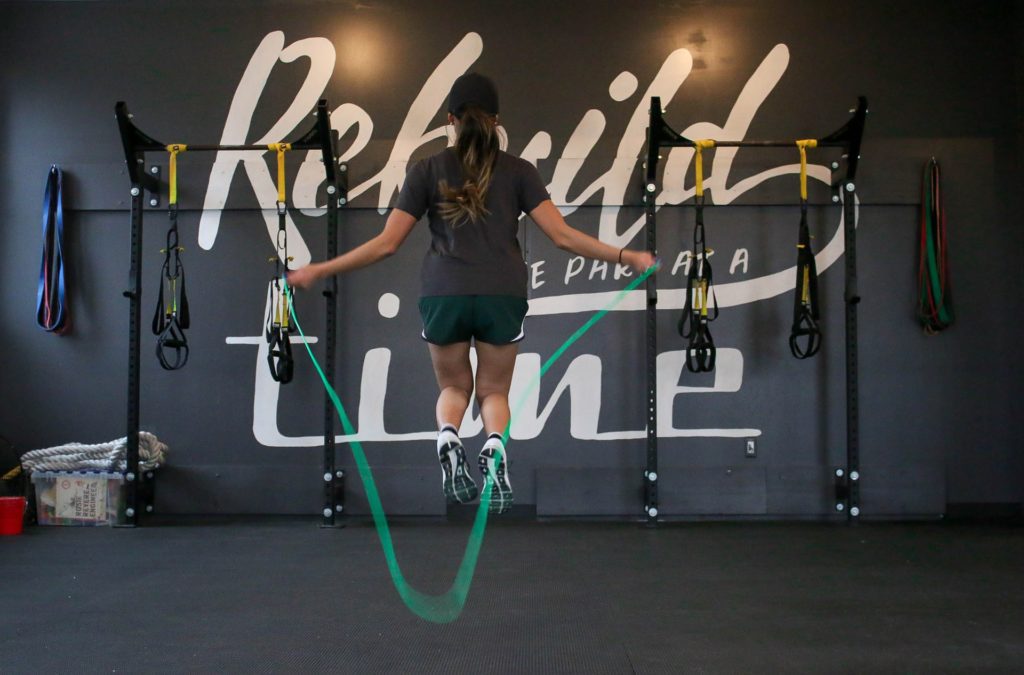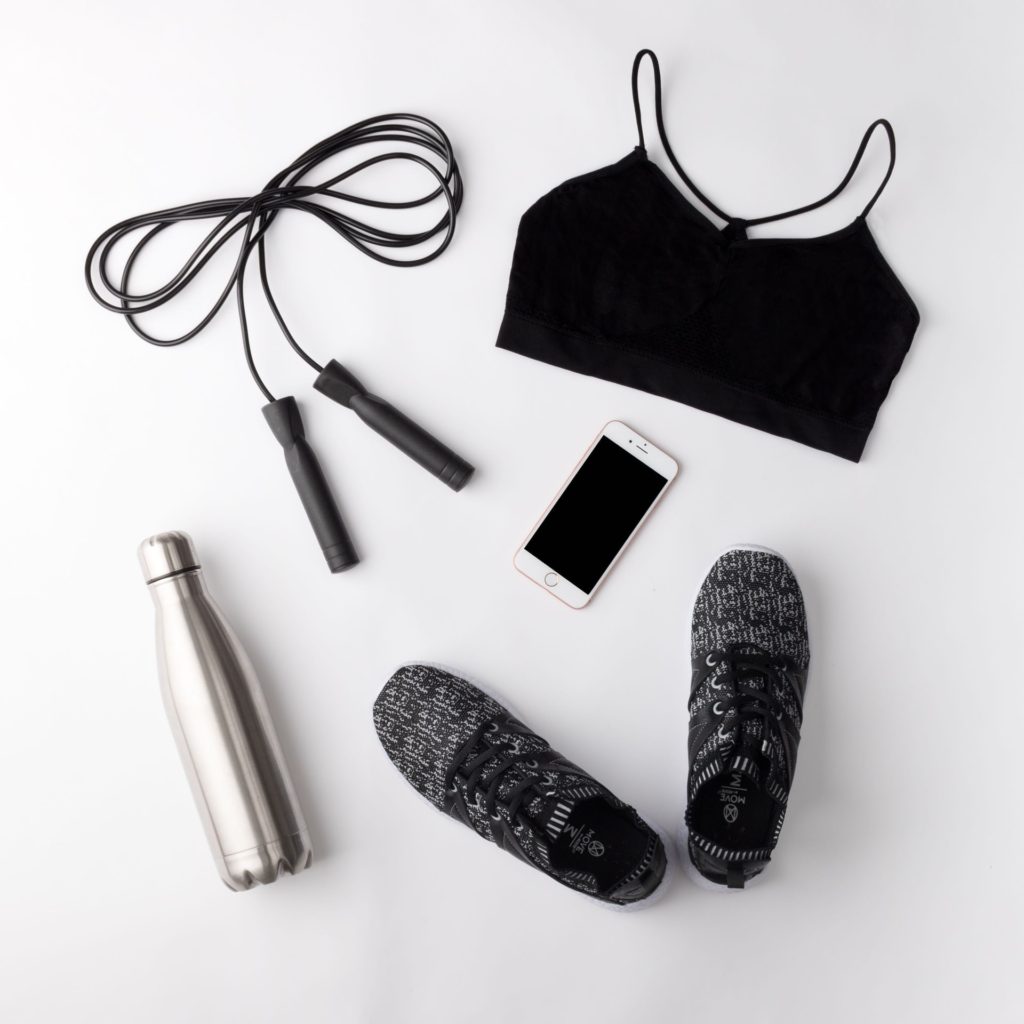Jumping rope; looks easy. Yet there are plenty of people for whom this is not so easy at all. If you are one of these people, read on! We’ll discuss what generally goes wrong and how to fix it.
Table of Contents
- How come you can’t jump rope?
- Tip #1: Use a rope of good length
- Tip #2: Use a trampoline
- Tip #3: Don’t jump too high
- Tip #4: Keep jumping on your front feet
- Tip #5: Spin the jumping rope from your wrist
- Tip #6: Start with performing 1 jump

How come you can’t jump rope?
If people can’t jump rope, they often think that too little muscle strength or too little stamina is the cause. However, this is usually not the case. There could be a number of other causes that we’ll discuss in a moment, but in most cases, it’s the timing of the jump.
Many people have trouble coordinating the movement of the jump rope with when to jump up. This is a factor that will naturally differ between people; for some people, this will be quite automatic in their system, while for some it will take a little more practice.
The general advice is to learn using trial-and-error. What this practically means is practice, practice, and practice. You will eventually make the right move and then it is important to learn from this. Your brain will eventually learn what the right timing is and then your performance will get better and better.
Of course, pure practice is not very practical advice, so we share some tips below on how you can ensure that you can jump rope in no time!
Tip #1: Use a rope of good length
Before you start, it is of course important that your equipment is in order; a rope with a good length is an example of this.
Using a skipping rope that is too short can cause you to make jumps that are too large. This may be the reason that you can’t jump rope. However, a skipping rope that is too long is also not useful. A large part of the rope will then scrape on the ground and this makes timing the jump difficult and the general movement will no longer run smoothly.
A good length skipping rope hits the ground when it’s at the bottom, but not by too much. An easy method to test if your skipping rope is a good size is this: you stand on the middle of the rope with 1 foot. Then you hold the rope up. A skipping rope with a good length will now end up about your armpits.
Tip #2: Use a trampoline
This is something that has personally helped me a lot in getting better at skipping ropes. And I understand that you are not going to buy a trampoline to get better at skipping ropes, but if you happen to have a trampoline, use it!
Because of the extra ‘boost’ of a trampoline, you are in the air much longer than you would normally be. This will make it easier to pull the rope under you during a jump. The main goal is to practice timing on the trampoline, to figure out when to jump in relation to when you pull the rope under you. The idea is that you then take this experience to the situation just on the ground and improve your timing.
Tip #3: Don’t jump too high
It goes without saying that you should not jump too low to succeed in jumping rope, but jumping too high will also cause problems. Besides the fact that jumping high will cost you much more energy, it also disrupts the rhythm of the movement.
If you jump high, you’ll be in the air longer, which means you have less time to jump over the rope again after landing on the ground. A jump that is too high will often lead to the next jump not succeeding because you simply don’t have enough time to get over the rope. When skipping ropes you really only have to get off the ground a little bit, so teach yourself this!

Tip #4: Keep jumping on your front feet
While jumping it is important that you stay on your front feet. If you stay on your front feet you can keep jumping in quick succession; contact with the ground is then short.
However, if you touch the ground with your heels and therefore have your foot completely horizontal, it takes much more time to make another jump up again. This can lead to you not being able to make a new jump fast enough; the rope will then hit your legs.
Tip #5: Spin the jumping rope from your wrist
Many people make the spinning motion of the jump rope from their shoulders; they use their arms too much in the movement. This will lead to rapid acidification of the shoulders and will also make the movement less stable.
Both of these factors can lead to skipping ropes failing. Therefore, make the movement completely from your wrist. This will take some time getting used to at first, but once you get used to it, skipping ropes will be much easier!
Tip #6: Start with performing 1 jump
If you want to learn something new, it is always important to start with the basics. Therefore try to jump over the skipping rope 1 time and then stop immediately. By doing this you can practice the timing of the jump.
Are you able to successfully jump over the skipping rope in at least 80% of the cases? Try to do 3 jumps in a row. Then take more and more small steps if things go well. Taking small steps will make it easier for you to learn a new skill and it will also make you feel better when you have successfully completed one step and can move on to the next.
Lifestyle coach [5+ years of fitness experience]